The Catholic Encyclopedia (15 vols.)
Digital Logos Edition
Overview
With 11,482 articles, hundreds of maps and illustrations, and contributions from 1,500 scholars, The Catholic Encyclopedia has remained a standard reference work for both Catholics and Protestants for more than a century—a reference work so large that, when first published, it required the creation of a new publishing company to accommodate the printing.
First published to fill a gap in early twentieth century reference works, The Catholic Encyclopedia has become one of the chief reference works on matters of the Bible, theology, history, and literature. Although first written by and for Catholics, this reference work has acquired an ecumenical and diverse readership from not only the Catholic Church, but from Protestants of all denominations.
From the development of important doctrines at the church councils, to the history of biblical interpretation, the history of the West cannot be separated from Roman Catholicism. That makes The Catholic Encyclopedia an essential reference work for the history of biblical interpretation and theological studies. What’s more, the editors have made special effort to include a large number of biographies—many of which are unavailable in other reference works. Each article also contains a detailed bibliography of books for further reading and research. This mammoth reference work is ideal for students, scholars, pastors, and laypersons from both Catholic and Protestant backgrounds.
This is a Logos Reader Edition. Learn more.
- 11,482 articles
- A vast wealth of biographical material from 2,000 years of church history
- Hundreds of maps and illustrations
- Contributions from 1,500 scholars
Top Highlights
“The will never decides without a motive, without the attraction of some good which it perceives in the object” (source)
“Finally with regard to the organ of tradition it must be an official organ, a magisterium, or teaching authority” (source)
“Christ in the Gospels laid down certain rules of life and conduct which must be practiced by every one of His followers as the necessary condition for attaining to everlasting life. These precepts of the Gospel practically consist of the Decalogue, or Ten Commandments, of the Old Law, interpreted in the sense of the New.” (source)
“Chrysostom tries to unite Antioch in celebrating Christ’s birth on 25 December, part of the community having already kept it on that day for at least ten years. In the West, he says, the feast was thus kept, anothen; its introduction into Antioch he had always sought, conservatives always resisted. This time he was successful; in a crowded church he defended the new custom. It was no novelty; from Thrace to Cadiz this feast was observed—rightly, since its miraculously rapid diffusion proved its genuineness. Besides, Zachary, who, as high-priest, entered the Temple on the Day of Atonement, received therefore announcement of John’s conception in September; six months later Christ was conceived, i.e. in March, and born accordingly in December.” (source)
“The Church, on the other hand, after changing the day of rest from the Jewish Sabbath, or seventh day of the week, to the first, made the Third Commandment refer to Sunday as the day to be kept holy as the Lord’s Day. The Council of Trent (Sess. VI, can. xix) condemns those who deny that the Ten Commandments are binding on Christians.” (source)
One of the most powerful influences working in favor of the truth.
—Hilaire Belloc
The greatest triumph of Christian science in the English tongue.
—Dublin Review
A model reference work.
—London Saturday Review
- Title: The Catholic Encyclopedia (16 vols.)
- Publisher: The Encyclopedia Press
- Volumes: 16
- Resources: 1
- Pages: 13,712
- Print Publication Date: 1907–1913
- Logos Release Date: 2020
- Era: Modern
- Format: Digital › Logos Reader Edition
- Christian Group: Catholic
- Resource Type: Encyclopedia
- Subjects: Catholic Church › Dictionaries; Theology › Dictionaries; Encyclopedias and dictionaries
- Resource ID: LLS:CATHENCY
- The Catholic Encyclopedia, Vol. 1
- The Catholic Encyclopedia, Vol. 2
- The Catholic Encyclopedia, Vol. 3
- The Catholic Encyclopedia, Vol. 4
- The Catholic Encyclopedia, Vol. 5
- The Catholic Encyclopedia, Vol. 6
- The Catholic Encyclopedia, Vol. 7
- The Catholic Encyclopedia, Vol. 8
- The Catholic Encyclopedia, Vol. 9
This title is included in the following collections
You can save when you purchase this product as part of a collection.
Verbum 9 Silver Legacy Library
$349.99$349.99Verbum 9 Ordinariate Silver Le...
$349.99$349.99Verbum 9 Gold Legacy Library
$849.99$849.99Verbum 9 Eastern Rite Gold Leg...
$849.99$849.99
- $849.99
- $1,097.99
- $1,499.99
- $1,499.99
- $1,499.99
- $1,699.99
- $2,999.99$2,249.99
- $2,499.99
- $3,499.99$2,799.99
- $2,999.99
- $2,999.99
- $2,999.99
- $3,999.99$3,399.99
- $4,749.99$3,562.49
- $3,999.99
- $4,749.99
- $4,749.99
- $4,749.99
- $4,749.99
- $7,749.99
- $10,999.99$8,249.99
- $11,399.99
- $23,999.99$17,999.99
- $24,999.99
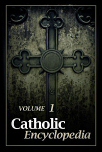
The Catholic Encyclopedia, Vol. 1
- Publisher: The Encyclopedia Press
- Publication Date: 1917
- Pages: 802
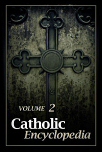
The Catholic Encyclopedia, Vol. 2
- Publisher: The Encyclopedia Press
- Publication Date: 1917
- Pages: 804
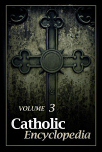
The Catholic Encyclopedia, Vol. 3
- Publisher: The Encyclopedia Press
- Publication Date: 1917
- Pages: 799
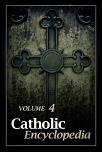
The Catholic Encyclopedia, Vol. 4
- Publisher: The Encyclopedia Press
- Publication Date: 1917
- Pages: 799

The Catholic Encyclopedia, Vol. 5
- Publisher: The Encyclopedia Press
- Publication Date: 1917
- Pages: 795
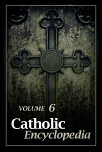
The Catholic Encyclopedia, Vol. 6
- Publisher: The Encyclopedia Press
- Publication Date: 1917
- Pages: 800
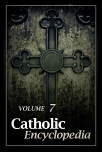
The Catholic Encyclopedia, Vol. 7
- Publisher: The Encyclopedia Press
- Publication Date: 1917
- Pages: 800
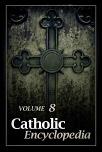
The Catholic Encyclopedia, Vol. 8
- Publisher: The Encyclopedia Press
- Publication Date: 1917
- Pages: 800
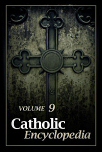
The Catholic Encyclopedia, Vol. 9
- Publisher: The Encyclopedia Press
- Publication Date: 1917
- Pages: 800
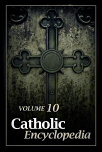
The Catholic Encyclopedia, Vol. 10
- Publisher: The Encyclopedia Press
- Publication Date: 1917
- Pages: 800
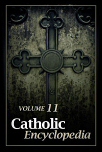
The Catholic Encyclopedia, Vol. 11
- Publisher: The Encyclopedia Press
- Publication Date: 1917
- Pages: 799
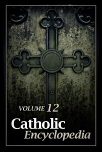
The Catholic Encyclopedia, Vol. 12
- Publisher: The Encyclopedia Press
- Publication Date: 1917
- Pages: 800
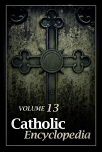
The Catholic Encyclopedia, Vol. 13
- Publisher: The Encyclopedia Press
- Publication Date: 1917
- Pages: 800
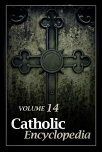
The Catholic Encyclopedia, Vol. 14
- Publisher: The Encyclopedia Press
- Publication Date: 1917
- Pages: 800
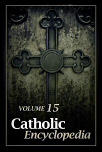
The Catholic Encyclopedia, Vol. 15
- Publisher: The Encyclopedia Press
- Publication Date: 1917
- Pages: 800
Reviews
7 ratings
L.J. Mazurek
3/27/2024
Unfortunately, the search function is near useless - you have to start with the exact letter with which the term begins, otherwise the engine is clueless as to what you could possibly be searching for. For instance, I was looking for Bede just now: starting with 'S' for St. Bede won't do it; typing in 'Bede' brings no results, neither does starting with 'V' or typing the entire word 'Venerable' - it's like the man never existed! The answer: 'The Venerable Bede'. So you *must* start with a 'T' for 'The' or the good reverend will not show up in results. Of course, you can do the good old Ctrl+F and search the entire contents, but then you end up scrolling through dozens of false hits, where he is merely mentioned in a different article. This could have been so much easier! Also, the forum discussion mentioned below regarding the missing volume XVI dates back to January 2021 - it is now 2024 and still no resolution...?
Chris
9/21/2021
Unfortunately, this resource is based on the text produced by the new advent website. That website has transcripted the text by hand, and unfortunately numerous sentences are missed, words mistyped, sentences reworded at the whim of the transcriber, entire sentences added (for example search "Pope Benedict XVI" and we find a sentence added to the text citing the year 1996), etc. While it is nice to have the bones of this encyclopedia available in Verbum/Logos, the resource in its present state does not retain enough fidelity with the source text of the original print publications. Nearly every article I have examined departs in some way or other from the printed source text. If one is looking for a faithful reproduction of the original source text, this does not seem to be it.
Michael Billington
4/15/2021
The Logos page for this says 16 volumes, but the downloaded resource says Volumes I-XV. Is there a Volumer 16 or is that an error on the Logos page?
Tobias Gerbothe
1/12/2021
It's sad, that this is only a reader edition (is this noted somewhere on this page?) so there are no links e.g. to references of the church fathers.Gregory Purtill
6/2/2020
Only God knows, it seems. I first put a bid on this 5/2/2013. Surprising though as this is a seminal resource for any serious Catholic study.Jonathan Jergens
5/3/2020
Is there any news on whether you can get the New Catholic Encyclopedia as well?